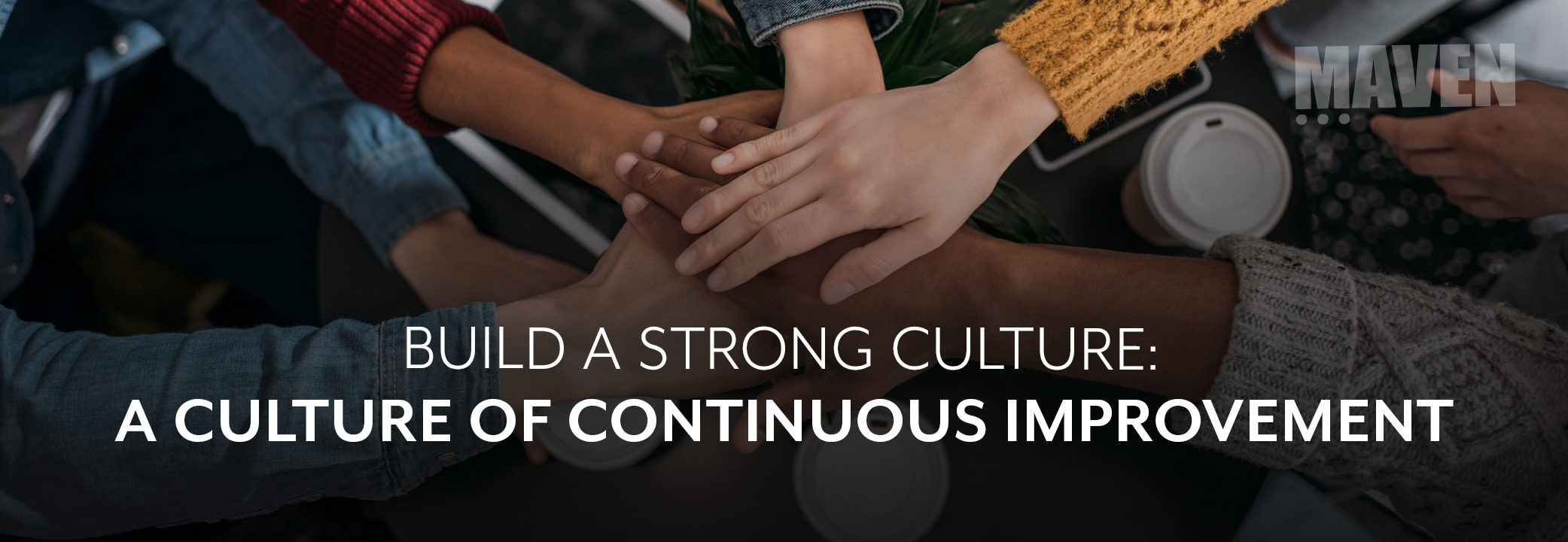To provide world-class maintenance, you need a world-class team. So how do you build a strong culture that empowers and strengthens your team? Start by looking to improve satisfaction of employees, co-workers, or clients. There is no time better than the present to create a culture of continuous improvement where everyone is actively engaged in enhancing themselves and their work. There are many structured ways of identifying and acting upon opportunities for improvement, but let’s keep it simple. We’ve identified three principles that can nurture a culture of continuous improvement within a maintenance organization. Don’t struggle to keep up with customer demand or navigate internal hierarchies – build a culture with a lasting continuous improvement plan.
Principle #1: Stop Fixing, Start Improving.
Work moves at an ever-increasing pace, and it’s natural to focus on what’s broken right now, fix only what’s necessary, and move on to the next emergency. There are too many pressing challenges to delve any deeper into root cause analysis or systemic change. But if we don’t start somewhere, when will this emergency survival mode end?
It won’t.
As challenging as it may seem, reserve some time to assess how today’s maintenance issue can be prevented in the future. This analysis shouldn’t be reserved for just the catastrophic failures. Those have high visibility and will receive attention whether or not we want it. Take a look at the more routine issues and develop long-term solutions before they become emergencies. Not only will this improve reliability and safety, but you will see positive morale changes throughout your team. Handling an occasional emergency is part of the job, and there is a well-earned feeling of satisfaction in resolving it. However, navigating a never-ending series of crises is a recipe for burnout and disengagement. By proactively developing long-term solutions to even the small challenges, you demonstrate to your team that you’re committed to a sustainable work environment.
For practical, easy to read suggestions, check out Don’t Just Fix It, Improve It by Winston P. Ledet and Sherri M. Abshire. It follows the journey of a fictional plant manager forced to escape reactive mode when a preventable catastrophic accident occurred on his watch. Most importantly, it outlines the steps he took to make lasting change for the benefit of his employees, his plant, and the organization as a whole.
Principle #2: Start Small but Keep Building.
We each have industry leaders that we admire for their grand-scale accomplishments, and we’ve all witnessed large social, scientific, and technical changes. While we tend to think of them as one large, monumental event executed by one high achiever, the reality is that most change is built on many small, incremental improvements. This principle is critical because significant changes often feel terrifying and destabilizing to people and organizations. By approaching change in small, achievable steps, the continuous improvement plan reduces the fear factor and increases speed to improvement.
For example, there can be significant value to implementing machine learning and artificial intelligence in your maintenance program. You may want to drive your organization toward condition-based maintenance and reduce the number time-based PMs you execute. But where do you start? For many, that starting point is an analysis of the data you currently have, and what data you still need to obtain to benefit from AI. That gap can be overwhelming for some. Why not target one particular asset class where you know you can demonstrate value? Clean up your asset data on a small scale, conduct a pilot, and target additional assets for your next round of improvement.
Any idea that reduces downtime or allows people to develop new skills is worth exploring. In addition, this principle opens the door to improve processes and enable employees to do their best work.
Principle #3: Ideas are Valuable.
Company culture relies greatly on people to identify opportunities for improvement. Most people are focused on their day-to-day work. So, ask yourself: How can I save myself five minutes a day? Then, implement that improvement and spread it to others doing the same process. You then take a small idea and drive a significant impact.
Another thing to keep in mind: don’t shy away from complaints. Quite the contrary – constructive criticism indicates that your ideas are being heard, that others are thinking through them and identifying potential issues. Embrace this feedback as an opportunity for improvement and a way to continue refining your ideas. Ideas are cheap and implementing them can be expensive, but implementing the right idea is priceless.
When people come up with ideas to improve their own work, they see the value of the changes. By engaging with others, a culture of continuous improvement is enabled. As a result, people can identify problems or opportunities for improvement, follow through on implementing ideas, receive credit for their work, and see a measurable impact from the efforts. This increases the chance of successful, sustainable improvement and creates an enjoyable culture for everyone. Improved employee engagement also has a positive impact on retention, customer service, product quality, and recruiting.
As a team contributor, don’t wait for leadership to create formal tasks. You provide a perspective of firsthand experience that your leaders need, and a strong leader knows this and respects your expertise. If you are a leader, encourage your team to identify opportunities for improvement. Empower them to resolve the challenges they identify, support their efforts to do so, and credit them for their achievements. This will encourage others to do the same, and the positive effects will propagate throughout the organization.
You may already have plenty of experience with so-called best practices and creating continuous improvement plans, but it’s essential that we continue to grow and adapt to changing industry needs. This, of course, is easier said than done. Successful people and companies are rarely successful because of a crystal ball or superior skills. Instead, they look to the skills and resources that make them successful and continue to apply them where needed. On the one hand, you must look outward to ensure you’re providing the right products and services. But on the other hand, you must look internally to ensure you are delivering those products and services in the most effective and efficient way possible.







